
Can You Travel with a Hamster? A Comprehensive Guide
Traveling with a pet hamster isn’t as straightforward as it might seem. It requires careful consideration of your pet’s safety, comfort, and the logistics involved.
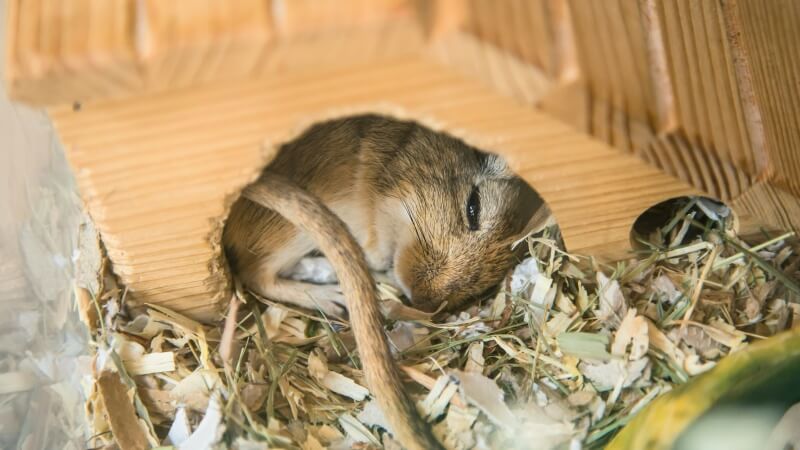
When you think about a hamster cage, you probably envision a cozy, active environment for your furry little friend. However, like any home, it requires proper care and maintenance to stay in top condition.
This blog delves into practical strategies to prevent wear and tear in your hamster cage, ensuring a safe and comfortable habitat for your pet.
A well-maintained cage is crucial for the health and happiness of your hamster, and with a few simple steps, you can significantly extend the life and quality of their home.
The material of your hamster cage plays a pivotal role in its durability and safety.
It’s not just about aesthetics; the right material can make a significant difference in the longevity of the cage and the well-being of your pet.
Let’s explore the various materials available and how to choose the best one for your furry friend.
Selecting the right material for a hamster cage is crucial for its durability and your pet’s safety. Metal cages are popular due to their strength and ease of cleaning. They are resistant to chewing and can withstand the test of time, but they require a non-toxic coating to prevent rusting.
Plastic cages, on the other hand, are lightweight and can come in various fun designs. They are easier to move around but can be prone to damage from chewing.
Wooden cages offer a natural and aesthetically pleasing look but can absorb odors and moisture, making them challenging to maintain. When considering the material, think about your hamster’s habits, such as chewing, and your ability to maintain and clean the cage effectively.
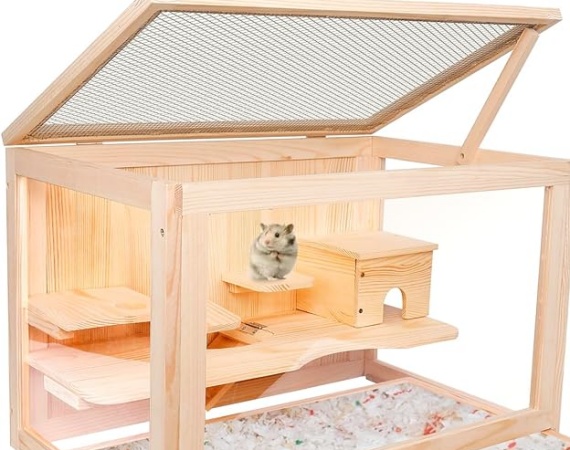
In choosing a hamster cage, it’s not just the material but also the design and build quality that matters. A sturdy metal frame is often a good choice, as it’s durable and chew-proof. However, ensure that the spacing between bars is appropriate to prevent your hamster from getting stuck or escaping.
For plastic cages, look for thick, high-quality plastic that can withstand some chewing and won’t crack easily. If you prefer a wooden cage, ensure it is untreated and safe for hamsters, as treated wood can be toxic.
It’s also important to ensure the cage is spacious enough for your hamster to move around comfortably, as a cramped space can lead to stress and health issues.
Maintaining and cleaning your hamster cage is not just about keeping it looking nice; it’s about ensuring a healthy environment for your pet.
Regular cleaning prevents the build-up of harmful bacteria and extends the life of the cage. Let’s delve into the importance of this routine and how to do it effectively.
Regular cleaning of the hamster cage is essential for the health of your pet and the longevity of the cage. A dirty cage can lead to health problems for your hamster, including respiratory issues and infections. Accumulated waste can corrode metal components and degrade other materials.
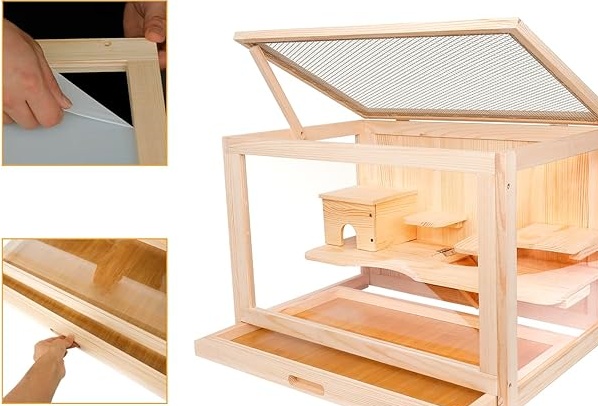
It’s important to establish a regular cleaning routine, which includes changing the bedding, wiping down surfaces, and ensuring no waste accumulates.
It’s also a good idea to perform a deep clean periodically, which involves taking the cage apart, cleaning each component, and letting everything dry completely before reassembling.
When cleaning your hamster cage, it’s vital to use safe cleaning products. Harsh chemicals can be harmful to your hamster, so opt for pet-safe disinfectants or mild, non-toxic cleaners. Avoid ammonia-based products, as they can be irritating to your hamster’s respiratory system.
For bedding, choose an absorbent, dust-free material that is easy to replace and won’t cause respiratory issues.
It’s also important to ensure the cage is completely dry after cleaning to prevent the growth of mold and bacteria.
Regular cleaning not only keeps the cage in good condition but also provides an opportunity to inspect the cage for any signs of wear or damage.
Hamsters are natural chewers, and this habit can lead to significant wear and tear on their hamster cage. Understanding why hamsters chew and providing appropriate alternatives can help preserve the integrity of the cage and keep your hamster entertained and healthy.
Chewing is a natural and necessary behavior for hamsters. They do it to keep their constantly growing teeth at a manageable length and to explore their environment.
However, excessive chewing on the hamster cage can lead to damage and potential escape attempts. Understanding the root cause of chewing is key to addressing it.
Boredom, lack of stimulation, and the need for dental care are common reasons. Providing a stimulating environment with plenty of toys and activities can help redirect this natural behavior away from the cage.
To prevent damage to your hamster cage and ensure your pet’s well-being, provide various chew toys and activities.
Wooden chew blocks, untreated willow branches, and cardboard tubes are excellent for keeping hamsters entertained and their teeth healthy. You can also introduce different textures and materials, like unbleached loofah or pumice stone, for them to gnaw on.
Rotating toys and changing the cage layout occasionally can keep your hamster’s environment stimulating and reduce the likelihood of them chewing on the cage.
Always monitor your hamster’s chewing habits and replace any worn-out toys to prevent ingestion of small pieces.
Regularly inspecting and repairing your hamster cage is crucial to ensure it remains a safe and comfortable home for your pet.
Wear and tear are inevitable, but early detection and prompt repair can prevent more significant problems.
It’s important to regularly inspect your hamster cage for signs of wear, damage, or potential hazards.
Check for loose bars, rust, sharp edges, or broken components. Pay special attention to areas where your hamster frequently chews or climbs.
If the cage has moving parts, like doors or wheels, ensure they function smoothly and securely.
This regular inspection helps identify issues early on, allowing for timely repairs and adjustments, which can significantly prolong the life of the cage and ensure the safety and comfort of your pet.
When you identify minor damage to your hamster cage, addressing it promptly can prevent further deterioration.
Tighten any loose screws and replace damaged or worn parts as soon as possible. If you have a metal cage with signs of rust, sand the area lightly and apply a coat of pet-safe paint. For plastic cages, check for cracks or breaks, and use safe adhesives to repair them if possible.
Regular maintenance not only extends the life of the cage but also provides an opportunity to make improvements or modifications that enhance your hamster’s living environment.
The location of your hamster cage in your home can significantly impact its condition and your hamster’s well-being. Factors like temperature, humidity, and sunlight can affect the durability of the cage and the health of your pet. Let’s explore the best practices for positioning your hamster’s home.
The location of your hamster cage can greatly affect its longevity and the health of your pet. Direct sunlight can cause materials to fade or warp and can create an uncomfortably hot environment for your hamster.
Similarly, placing the cage in damp areas can lead to rust in metal cages and mold growth in wooden or plastic ones.
It’s also important to consider air quality; avoid placing the cage near kitchens or bathrooms where fumes and humidity are higher. Keeping the cage in a stable, well-ventilated area can prevent premature wear and tear and create a healthier environment for your hamster.
Choosing the right spot for your hamster cage involves balancing several factors. A stable, level location away from direct heat sources, like radiators or windows, is ideal. Ensure the area is not prone to drafts, as hamsters are sensitive to temperature changes.
High traffic areas should be avoided to reduce stress and the risk of the cage being accidentally knocked. Consider the noise level as well; hamsters are nocturnal and need a quiet environment during the day.
A calm, consistent location contributes to your hamster’s overall well-being and helps maintain the condition of the cage.
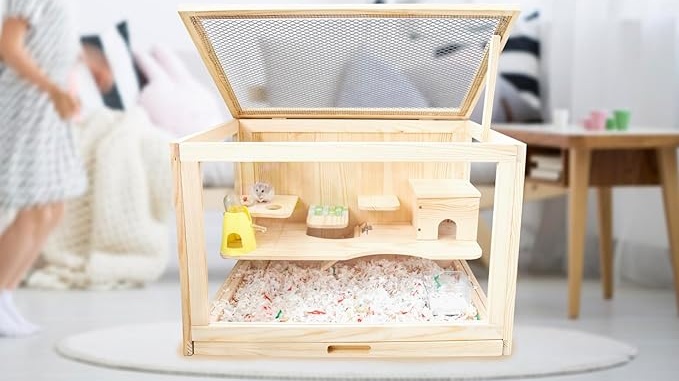
In conclusion, maintaining and prolonging the life of your hamster cage is vital for your pet’s well-being. Regular cleaning, choosing the right materials, preventing chewing damage, conducting routine inspections, and choosing an optimal location are key strategies.
Remember, a well-maintained hamster cage is more than a habitat; it’s a crucial part of your hamster’s health and happiness. By following these guidelines, you can ensure that your furry friend enjoys a safe, comfortable, and long-lasting home.


Traveling with a pet hamster isn’t as straightforward as it might seem. It requires careful consideration of your pet’s safety, comfort, and the logistics involved.
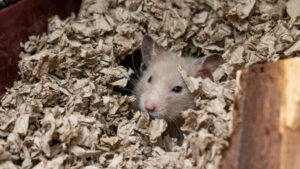
Finding the best hamster cage for Syrian hamster is crucial, as these curious, low-maintenance, and independent pets thrive in the right environment. The primary concern

When I began, the task of selecting essentials for a natural hamster habitat was daunting. To ease this process, I’ve assembled an exclusive set of

Have you ever wondered, “Are hamsters happier in bigger cages?” Generally YES. It’s a question that might seem straightforward, but there’s more to it than
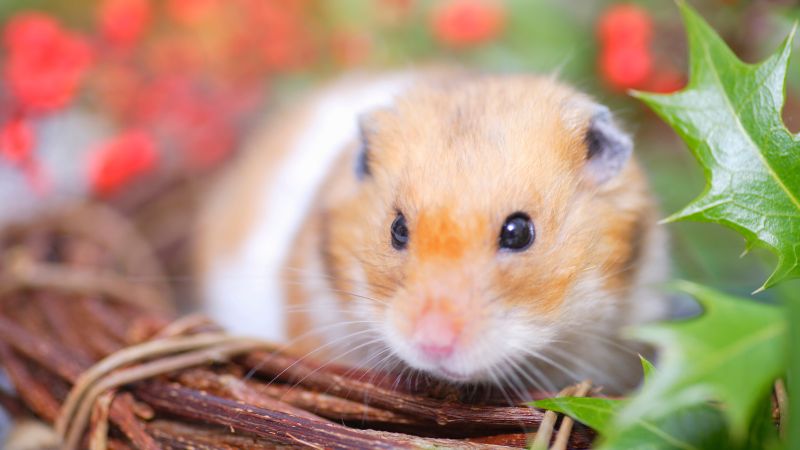
Traveling with a pet hamster isn’t as straightforward as it might seem. It requires careful consideration of your pet’s safety, comfort, and the logistics involved.
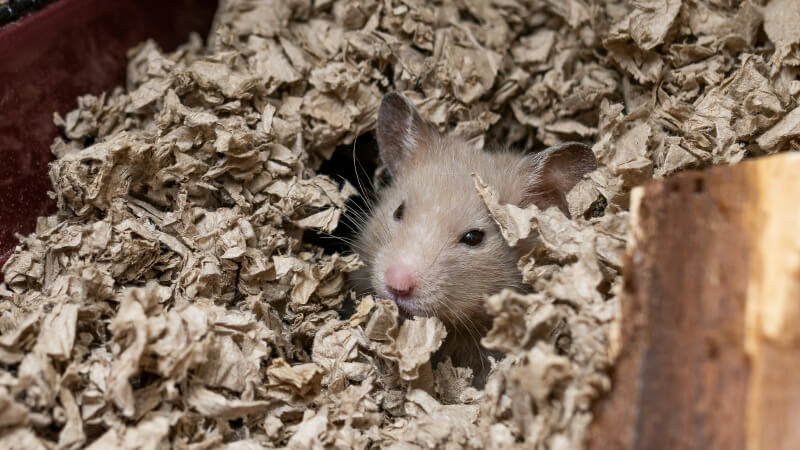
Finding the best hamster cage for Syrian hamster is crucial, as these curious, low-maintenance, and independent pets thrive in the right environment. The primary concern

When I began, the task of selecting essentials for a natural hamster habitat was daunting. To ease this process, I’ve assembled an exclusive set of

Have you ever wondered, “Are hamsters happier in bigger cages?” Generally YES. It’s a question that might seem straightforward, but there’s more to it than